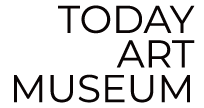This exhibition for Today Art Museum’s third Documents aims to explore the process of global economic, social and cultural transformations that the boom of emerging market economies has introduced. It will try to examine various ways in which art has participated in or reacted to some of the transitions involved, and to their effects on culture, society and the individual.
The French expression bric-à-brac is broadly employed to mean jumble, odds and ends, or an uneven group of things, with a certain undertone of confusion. The first word of this idiom coincides by chance with the acronym BRIC – Brazil (7th world economy), Russia (13th), India (6th) and China (2nd) –, launched in 2001 by economist Jim O'Neill to discuss the major global economic role played by these four countries. Despite their current slowdown, the BRICs are the largest emerging market economies in the world, and account for more than 25% of the world's land area and more than 40% of its population. The acronym has come into widespread use to epitomize a historic process that is taking place: the dramatic increase of global economic power of the developing world, which has come to play a leading international role in the post-Cold War era.
This shift is a decisive outcome of globalization that is reshaping the world and therefore having a planetary impact not only in economy, but also in politics, society, the environment, culture and life. It is changing the way in which modernity and colonialism have structured the world. Traditional divisions between First and Third Worlds have exploded, giving way to a mixed, more decentralized distribution of roles. The new situation not only involves the BRIC countries, but many other emerging economies in Africa, Asia, Latin America and the Middle East. Even though some of these economies are suffering the general constraints in today’s world economy, they have changed the global status quo – and its chart of power – forever, and continue to transform it.
Large market economies are emerging from critical situations of underdevelopment in countries that have undergone economic growth accompanied by fast, uneven modernizations. The classical historical scheme of enlightenment, development and modernization has not been the route for the former Third World to grow: it experiences unorthodox processes full of contrasts of every kind. Many of these societies are postcolonial ones that have been already dealing with inequalities, ambiguities and hybridizations inherent to the postcolonial condition.
While macro-economies grow, infrastructures are build, modernization and internationalization advance, massive irregular urbanization spreads (two thirds of the world’s urban population live now in emerging and underdeveloped countries), and global power relations change, sharp contrasts prevail in society. Serious income discrepancies in many of these nations aggravate their low per-capita income levels, in spite of PIB’s growth. All these processes amount for drastic social inequalities that foster crime and political instability. Such problems add to the coexistence of different historical times (concomitance of modern, feudal and even tribal stages), frictions between swiftly imposed modernization and traditional life, metamorphic cultural mutations entailed in massive demographic displacements from traditional rural environments to cities, use of high-tech facilities within pre-modern contexts, as well as many other contrasts.
However, a very fruitful rise in the size of the middle class is taking place. Even if still low, personal income has increased over previous averages, improving the life standards of millions of people, although critical poverty remains. Environmental degradation and pollution have accompanied vertiginous industrialization and unregulated, wild capitalism. Lack of modern infrastructures and widespread corruption are also affecting a more systematic growth in many of these countries. Simultaneously, some effects of modernization have brought new possibilities and are being instrumental for the new transformations. People have massive access to the Internet, mobile telephony and real time communication, something that has opened previously unthinkable possibilities for broad information and knowledge. The large populations of the BRICs and related countries have now more money to spend and have configured a gigantic market, with all the pros and cons that this conveys. Education and health are improving, and a new energy has aroused among people, especially in Asia, while emerging countries are playing an increasingly powerful role in global politics. To summarize, a bric-à-brac of disparate situations and processes manifests in very vibrant societies and cultures going through economic mutations based on quantity more than in quality and social coherence.
Following the pun in its title, the show looks into the “BRIC” (and not only into the BRIC countries) as epitome of huge quantitative transformations that are changing the world, focusing on the “à-brac” of the qualitative complexities that economic growth have unchained in the “living” society of emerging countries. Art has the power to delve in depth into social and cultural matters by virtue of its particular tropological approach, which allows artworks to deal with the intricacies of society. Art is able to present, in a lively and enlightening manner, the human aspects, the subjectivities, the cultural predicaments that macro-economy’s numbers cannot reveal.
My curation will explore the economic, social and cultural contrasts and contradictions inherent to the general processes outlined above. I am proposing artists who do not address these issues in a direct or sociological way, but who react to, express, or discuss them using the tropological power of art, creating profound insights to these contemporary problems. The selection includes well-known artists together with up-and-coming ones, since the criteria for choosing them was mainly based on how their works respond to the theme in a critical and provocative way, as well as their excellence and contemporary character.
My selection gathers not only artists who directly refer to the contrasts of swift modernization in the new rising market economies, but also others who create metaphors that can be applied to illuminate these contemporary problems that affect us all around the world. Therefore, it includes artists from the BRIC and other emerging countries, and artists from any other country that can create or have created works that contribute to the show’s goals. The selection looks equally for artists who tackle social problems and for others who are more oriented toward subjectivities, or who connote the exhibition’s general theme in an indirect way. The intention is not to curate an exhibition of straight social comment but a subtle one, which can express and illuminate the complexities involved with great artistic and aesthetic impact.
Gerardo Mosquera
Co-curator











